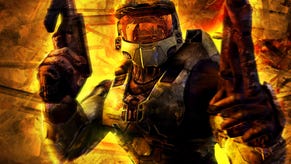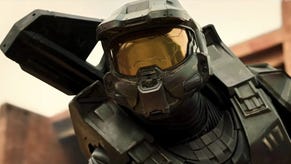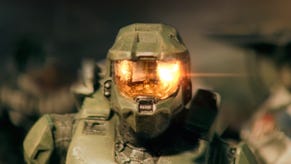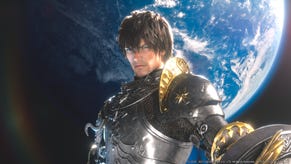Better Than Halo: The Making of Halo 2
As Microsoft prepares to switch off Xbox 1, Bungie reveals the painful birth of the game that defined Xbox Live.
"Halo is a war story, and we felt strongly that telling one side of the conflict was only half of the story," explains Staten. "That was the reason for the Arbiter - to offer another, compelling point of view on a war where telling friend from foe wasn't always clear-cut. We knew we had a trilogy on our hands, so we were looking past the shock of playing as the enemy to the eventual, allied push against the Flood led by the Chief and the Arbiter in Halo 3."
In the final analysis, Griesemer is happy that the team decided to introduce the Arbiter, despite the backlash. "I'd much rather experiment and do something surprising, and not have everybody appreciate it, than just turn the crank and do another alien war movie with a space marine..."
The single-player lives on in players' memories, of course - but in the years since 2004 it's the multiplayer which has kept Halo 2 alive. Even in the face of the Xbox becoming obsolete and countless other online games being launched, Halo 2 has retained a core band of fans who remain devoted to the game. Perhaps even more so than the sales figures or the critical acclaim, it's this which best illustrates Halo 2's success.
Yet if this is a story about a game whose tortured development ended up creating a brilliant, if flawed, modern classic, then there's a key question that remains unanswered. This industry is no stranger to nightmarish development processes, but it's far more common for the games they produce to be Daikatana than it is for them to be Halo 2. So what is it that made Bungie's messy, frantic development process turn out a gem, while others struggle to produce clods of dirt?

"I think it's because the places where Halo 2 did succeed, like Live, like the single-player combat, are such bright spots," says Griesemer. "Looking back on it as a player, that's all you see. For us looking back, all we really see is..."
He pauses, and Carney finishes his sentence for him in a grim tone. "The wreckage," he says.
"Yeah," says Griesemer. "The places where it didn't succeed."
There's a momentary silence. "Oh, I don't know," says Butcher, eventually. "I went back and played a bit of Halo 2 about six months ago, and the part where you're playing as the Arbiter, and you come out and see the quarantine zone, with the Corrupted Library... Just coming out and looking at that sky! There are moments in Halo 2 that really give me chills. The low points are much lower than we would have liked, but the single-player had some amazing moments."
"If the creative process is easy," concludes Griesemer, "it probably means you're not doing anything interesting. Any really cutting-edge, triple-A, forefront-of-the-industry type creative process is going to be a little bit painful. It's just whether you're really working on something great, or whether it doesn't come out that well... You never really know until the end."
Five years down the line, as Halo 2 takes its final bow with the closure of Xbox Live services - "a really poignant moment for me, actually", admits Butcher - the Bungie team knows the verdict. Halo 2 was their difficult second album; the victim of over-ambition, the product of a tortured gestation period, flawed and incomplete. If there were ever a testament to Bungie's talents, it's that for all that, it remains a masterpiece.















